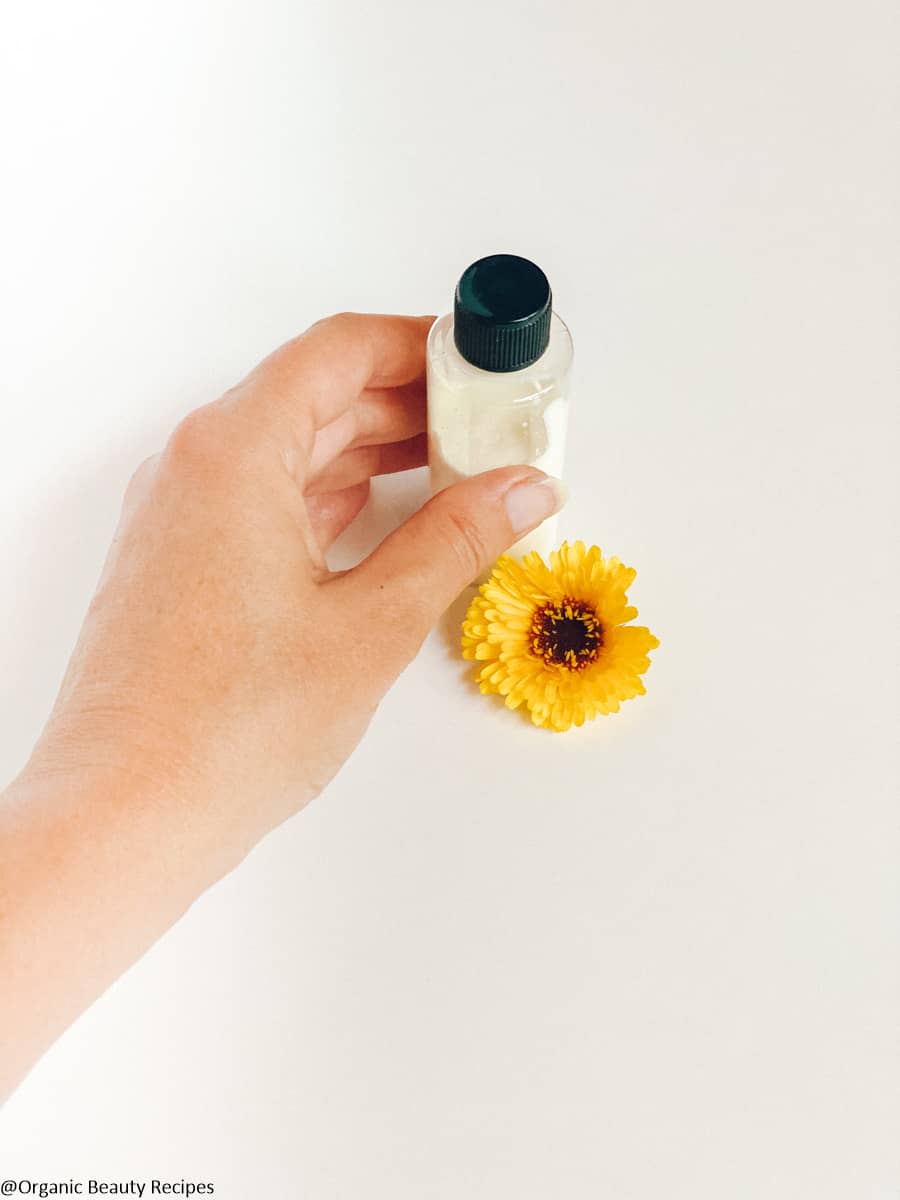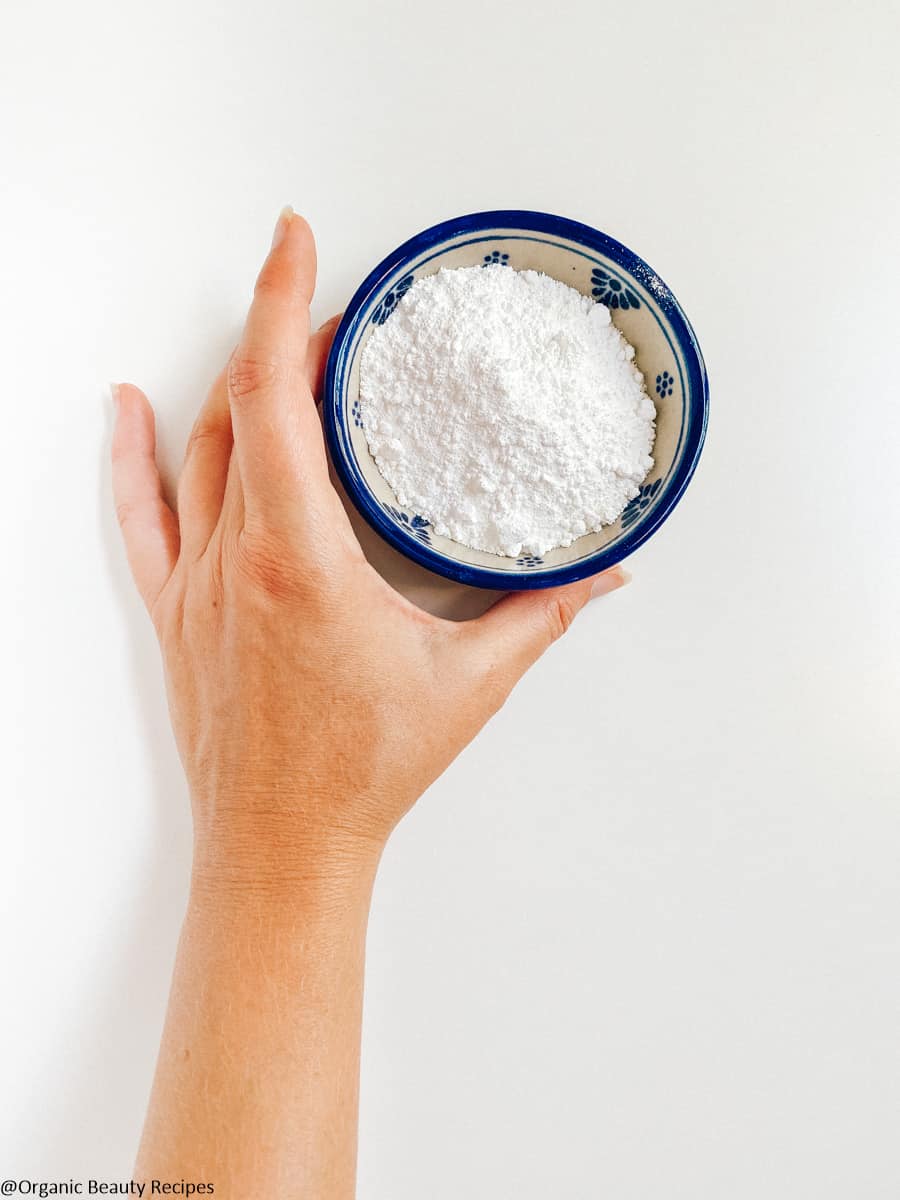“Organic Beauty Recipes By Eve – The Complete Guide To DIY Natural Beauty” is my long-awaited book, with a treasure trove of effective and easy to follow recipes with 100% natural ingredients.
You can order the ebook now on amazon for only $4.99 or get the paperback edition for $19.99 (USD).
I also launched my own small business offering all-natural raw shea Butter! Every time you purchase my Shea butter, you are supporting the Ghana women coop which employs 95 women and buys shea nuts from more than 5,000 women in 44 communities.
Lastly, check out my favorite shopping lists on Amazon . I will receive a small commission from the affiliate program Amazon if you order something and this is at no additional cost to you.
Thank you for your support!
Making your own DIY sunscreen with zinc oxide is easy as long as you have the right ingredients: safflower oil, raspberry seed oil, beeswax and zinc oxide. Summer is my favorite season and while I am an adept of responsible natural sun tanning without applying sunscreen to soak all that well needed vitamin D, sometimes sunscreen is required, more particularly when you have fair skin or when you are traveling to an exotic location.
Read on to see how I make my very own DIY natural sunscreen!

DIY sunscreen with zinc oxide ingredients
This DIY sunscreen calls for the following ingredients:
Zinc Oxide, a common ingredient in sunscreens, is an effective skin protectant that helps reduce the damage from exposure to harmful rays.
The linoleic acid contained in safflower oil helps balance the sebum production in the skin. Moreover, its lightweight consistency makes for quick and easy absorption into the skin.
- Raspberry seed oil Raspberry seed oil offers a natural SPF protection of around 25-50 against UVB rays. High in vitamin A and E content, it helps rejuvenate skin and replenishes collagen levels.
Rich in vitamin A, beeswax helps support skin health and forms a protective barrier on the skin without clogging pores.
- Chamomile flower water
Chamomile water is known to boast anti-inflammatory and antimicrobial properties, which makes it an effective treatment for skin concerns like psoriasis and eczema.
- Grapefruit seed extract as a natural preservative
Widely used in skincare and cosmetics, grapefruit seed extract prevents the growth of fungus and bacteria and is used as a preservative.

Ingredients
- 5 tablespoons raspberry seed oil
- 5 tablespoons organic safflower oil
- 2 tablespoons Zinc Oxide
- 1.5 tablespoon beeswax pellets
- 2 tablespoons chamomile flower hydrosol
- 20 drops Grapefruit seed extract
- 2 100 ml Glass Salve Containers
Instructions
- Add the beeswax, safflower oil, raspberry oil, and hydrosol a double boiler or an aluminum bowl filled with water on low - medium heat, until they are melted.

- Remove from the heat and immediately mix with a manual egg beater spatula until the cream starts to form and until it is the consistency of a cream. if it is hot in your kitchen, then add the double boiler in a pan filled with cold water. Your spatula must leave marks in the cream.

- Add the zinc oxide, mix well.

- Add the grapefruit seed extract, mix well.

- Pour in a glass jar container or in a squeezable plastic bottle.
- Use within 6 months and apply this DIY sunscreen before going under the sun. Please note, this is not a waterproof sunscreen!
What is zinc oxide?
I’ve used uncoated, non-nano, and non-micronized zinc oxide for this recipe and I’d recommend you do the same.
I cannot stress enough how important it is that you only purchase zinc oxide that hasn’t been micronized i.e. ground into smaller particles (as these smaller particles are more likely to penetrate the skin barrier). Unlike the thin and watery consistency of most store bought sunscreens (which can be a HUGE nightmare to apply), you’ll find that this sunscreen has a very creamy texture. It completely absorbs into your skin and doesn’t leave behind any of that annoying, sticky residue.

Is zinc oxide safe?
Zinc oxide has been approved by the FDA as a safe and effective active ingredient in sunscreens. In some cases, it’s even recommended by dermatologists to treat certain skin concerns.
Used as an age-old remedy to treat burns and wounds, zinc oxide provides your skin with the best possible sun protection. Being a physical barrier substance, it sits on top of skin and blocks all harmful rays—UVA, UVB, and even UVC. This is a feat in itself because most chemicals can only block one type of ray and therefore commercial sunscreens have to use a cocktail of chemicals in order to be effective.
Moreover, unlike other chemical ingredients, zinc oxide has a stable structure which means that it won’t break down on your skin when exposed to sunlight.
What is the difference between zinc oxide and titanium dioxide?
As discussed before, zinc oxide takes the cake when it comes to being the most effective, single-ingredient, broad-spectrum blocker. Titanium dioxide is another mineral active ingredient used in sunscreens. It, however, only offers protection against UVB rays and not so much against UVA rays.

Are nanoparticles safe?
While results from some studies have shown adverse effects of nanoparticles on the human body, a larger number of studies have failed to produce any conclusive evidence about them crossing the skin barrier in significant amounts. However, they have been shown to cause lung damage when inhaled.
Are DIY sunscreens dangerous?
As long as you’re using good quality ingredients and applying your sunscreen properly, you shouldn’t be worried. But it is true that there is no way to test the SPF of your composition unless you have a lab.
How often should you use sunscreen?
Re-apply your sunscreen at least every 2 hours, and as soon you are sweating excessively or splashing around in a pool. Try to limit sun exposure as much as you can ( 20 minutes a day tops). And rather than slathering sunscreen on your face and body every day, whenever you can, stay shaded and cover your face and body.

The dangers of commercial sunscreens
There’s been a lot of controversy about the ingredients used in commercial sunscreens. Oxybenzone, for example, is one common ingredient found in almost 60% of sunscreens sold in the US. A survey by the US Center for Disease Control found that an astounding 97% of Americans have oxybenzone in their blood. It’s been shown to trigger allergic reactions and even more alarmingly, disrupt normal hormone functions. Not surprisingly, some health professionals are warning against the use of products containing this ingredient on kids and babies.
We’re also especially concerned about the use of ‘continuous spray’ chemical sunscreens that are becoming so popular, mainly because of the risk of inhalation, which can damage lungs.
Can you make a homemade waterproof sunscreen?
Waterproof sunscreens make use of polymer such as dimethicone that are better to stay away from. Weighing the pros and cons, you’ll find it a far better option to just re-apply your sunscreen after being in contact with water. Ditch the waterproof option and your skin will thank you for it.
Are there commercial natural sunscreens you can buy?
While there are plenty of sunscreens on the market that claim to be “all-natural” and free of toxins, there are only a few options that are true to their claim.
The only company that I can personally vouch for is Green Beaver and its line of mineral sunscreens. Their sunscreens are free of harsh chemicals and made using only safe, organic active ingredients like mineral zinc oxide and titanium dioxide. Not only do their sunscreens keep your skin protected but also moisturized and hydrated. They also have kid friendly options. And the best part is that all of their organic sunscreens are Certified Ecocert, vegan, not tested on animals, biodegradable, GMO free and gluten free.


The dangers of sunburn
The dangers of sunburn go well beyond the initial discomfort and redness. While your sunburn may fade, the damage inflicted by it stays with you forever. Did you know that sunburn can actually cause damage to the very DNA of our skin? This can result in physical scarring, accelerated skin aging and damage like dark spots and wrinkles, as well as other, far more dangerous consequences, like skin cancer.
Use common sense under the sun
Avoid sunbathing during sun peak hour (10am to 3pm) and limit your sun tanning to 20 minutes.
I hope you have enjoyed my recipe, please share the love and rate ***** in the comments below!

I wonder if I use half the zink oxid will the spf be like 15? I dont need to sunscreen to compleetly block the sun.
Thanks
i love your lotions i make 2 of them throughout the year. for this one what can i substitute for the grapefruit extract? it makes my skin sensitive. rosemary?
is there a way to make this water resistant so i can use this for summer water activities?
Firstly ,Can u pls tell us Spf of this sunscreen . If not exact but atleast approx .
2. Is emulsifier reqd
3. What are the substitutions available in this recipe .
Pls reply
I will be waiting for your reply . I really want to make this
And thankyou so much for sharing ur recipes with us
Author
Hi Lakshi, the SFP depends on the oil you use, for example Raspberry seed oil offers a natural SPF protection of around 25-50 against UVB rays.
no emulsifier required.
For substitutions, well you could replace safflower oil by sunflower oil or jojoba oil.
Hello Eve!
Thanks so much for sharing your knowledge!
I have two questions I had hoped you could answer:
1. Can I use Candelilla Wax instead of Beeswax to make this vegan?
2. It seems like the formula is mainly oil/wax based except the hydrosol (water) – you don’t mention an emulsifier and I was concerned that the ingredients wouldn’t mix well (based on previous experience when mixing water based and oil based ingredients). Can you elaborate a bit why this recipe doesn’t require emulsifier?
Thanks a bunch!
Hello Eve!
This recipe is awsome! Thank you!
I’m looking forward to your book…
Namaste
Ana
Author
thank you Ana, sending you lots of love back 🙂